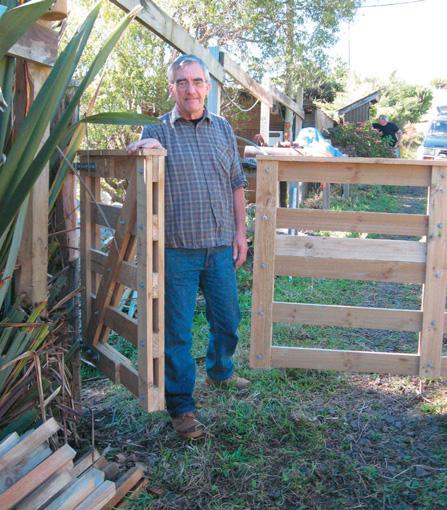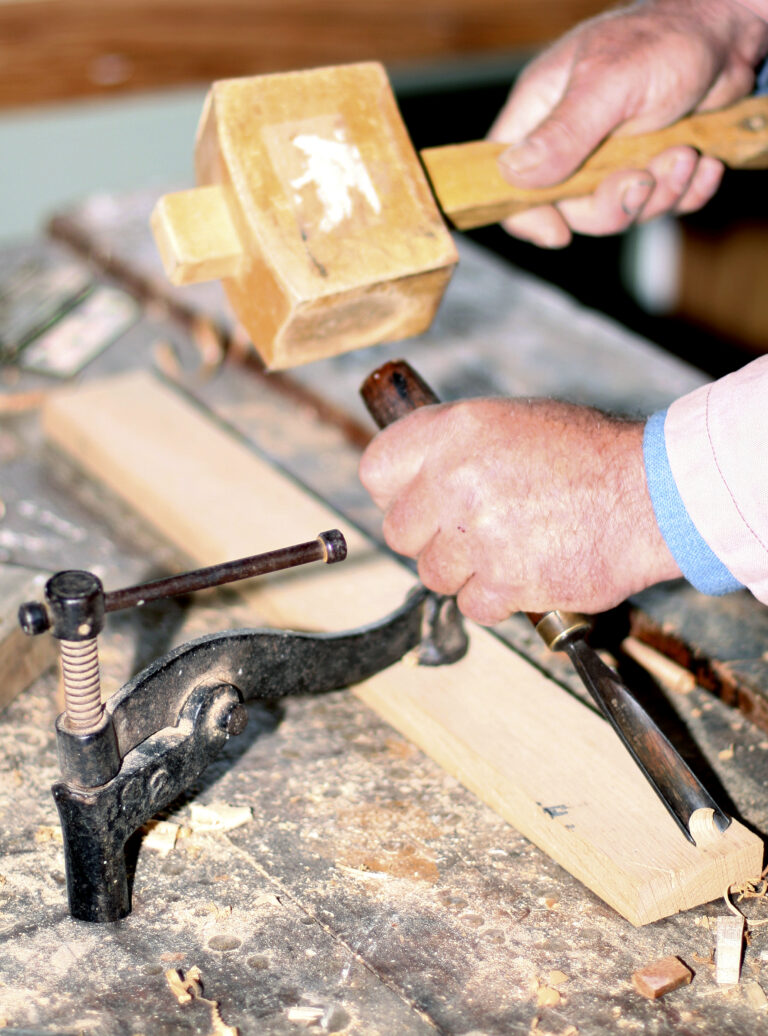The traditional New Zealand farm gate is a classic
DIY job
By Robin Overall
Photographs: Terry Snow
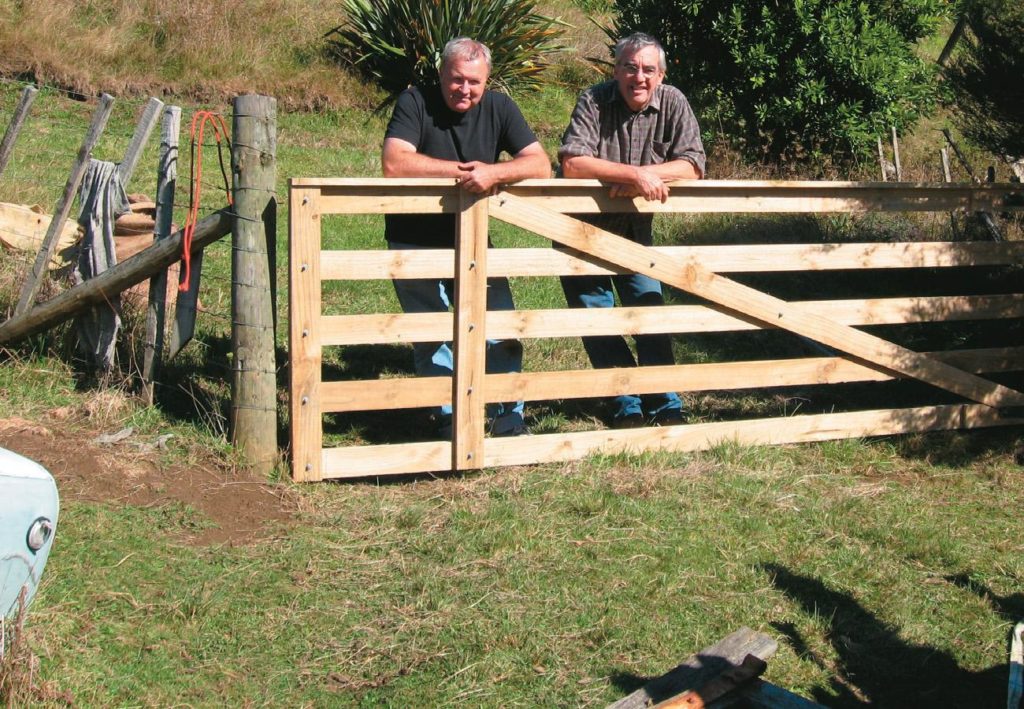
The classic New Zealand five-bar farm gate is not too difficult to make on-site when you need a new one.
Few people might consider building farm gates, but they can be costly and heritage gates are quite expensive so it might be worth it to build your own. I had to replace one on my property because the donkey ate some of the old gate. When the animals in the paddock get bored they can take to chewing the gates and even though the timber is tanalised it apparently doesn’t harm them.
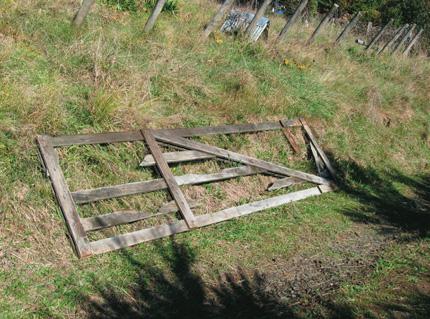
Gap
There are some crucial things to remember. It is important to leave a gap at the top hinge between the bottom of the hinge and the gudgeon, and equally important that the bottom hinge sits firmly on the bottom gudgeon. This is the major weight-bearing surface and works by compression. If the gate rested on the top pin it would cause strain on the hinge at the top as the weight of the gate pulled it down.
In the same equation to ensure the correct weight-bearing balance, the diagonal struts on the gate have to go down to meet the hinge at the bottom corner, not the other way round, to provide support for the compression. Otherwise, the timber in the gate would be expanding and pulling apart, not being forced together.
Another common sense but equally important requirement is to use bolts not nails. The bolts work by pinching together the three pieces of wood at the point where the hinges are fixed and it is this compression that does the job as the bolts take the strain, not simply the fixing of the bolts. Nails won’t work in holding the gate together; if you want to cheat and use nails, you’ll find they won’t do the work properly.
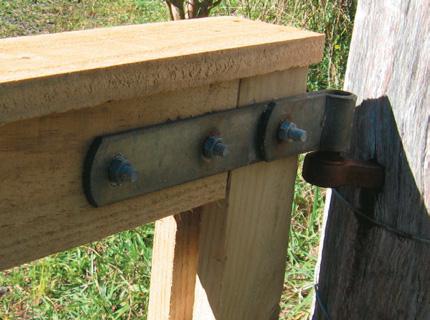
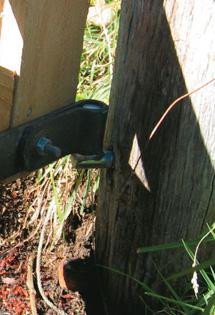
Rough-sawn
I am using rough-sawn 100 x 25 mm warehouse timber for this farm gate and you will find supplies at a timber yard or stores like ITM rather than a suburban hardware chain. The gate will be 3.6 metres across to enclose the existing entrance and the uprights are about 1200 mm high. They can be as much 1400 mm—people with alpacas, for example, would need high gates.
The timber normally comes in six-metre so ask the timber yard to cut them into appropriate lengths for your work and they will also fit better on the trailer. There is a variation which I made for one gate—instead of a gate right across the drive I built a three-quarter gate linked with a small quarter gate. The small gate is on the same principle and is easier for a high-traffic area. It saves opening the big gate every time and is one less temptation for the kids who always want to swing on a big gate. I am using the gudgeon pins in the existing gate posts as this is a replacement gate.
But if you are putting in new gate posts and gudgeons, beware of the trap—you have to drill the hole for the gudgeon pin in the post below and off-centre from where the gate is centred because the hole for the gudgeon pin in the hinge is offset.
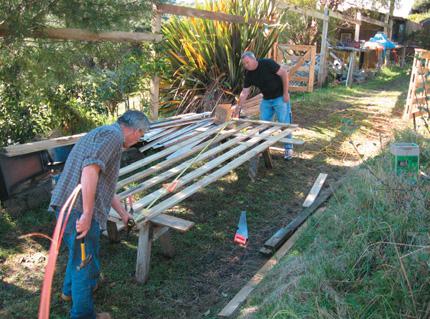
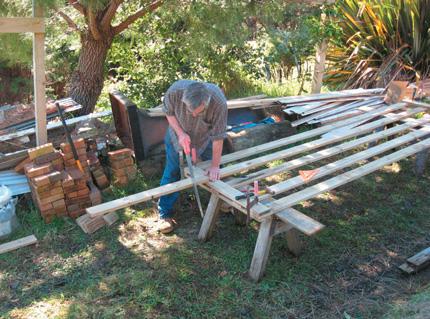
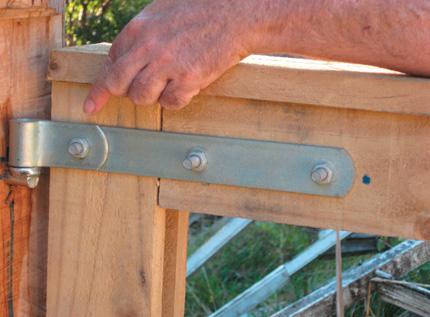
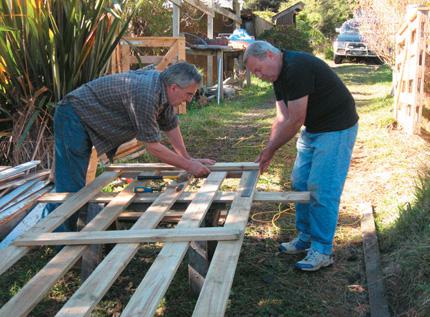
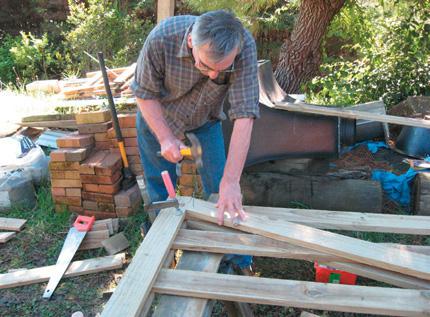
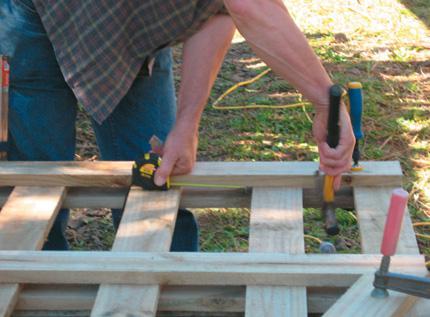
Reduced-shank
Beware before you start that you need reduced-shank drills. If you don’t have a drill with a 13 mm chuck or can’t go bigger than 10 mm, you will start the project and realise you can’t get the drill holes right through the wood. You will also need an 18 v cordless drill with some grunt.
I was able to build this gate using just two sawhorses, a power drill, handsaw, hammer, and spanner or socket set. I laid out the five main bars equally across the sawhorses to give an even spacing. The gap between the bars I worked out when calculated from under the top bar and from the top of the bottom bar, was 136 mm which I measured with a tape while adjusting with a hammer. It was just a question of sawing the planks to the right length and then cramping the whole lot together before starting to bolt it.
I placed two uprights each on either side at each end and at a point one-third of the way along (for looks as much as for support). These uprights on either side of the gate clamp the five bars together when bolted. After they were in place, we put the diagonals on either side of the gate to run from the bottom hinge end to the top of the middle uprights. An aid was to write “hinge end” and “top” on one side of the gate so we knew where to place the diagonal to the bottom hinge end.
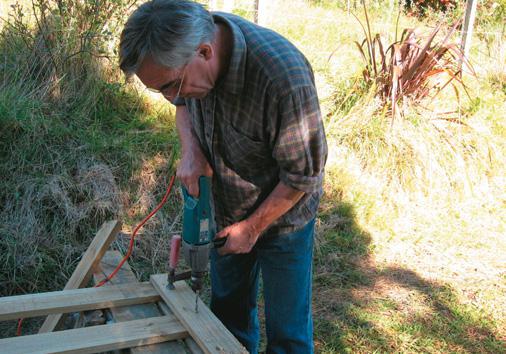
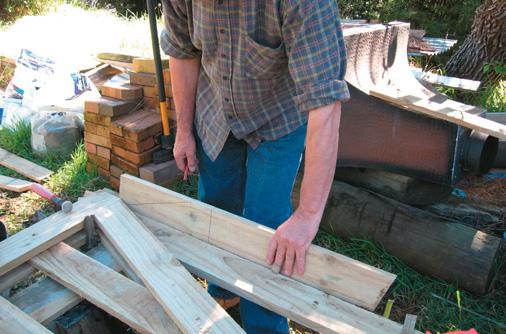
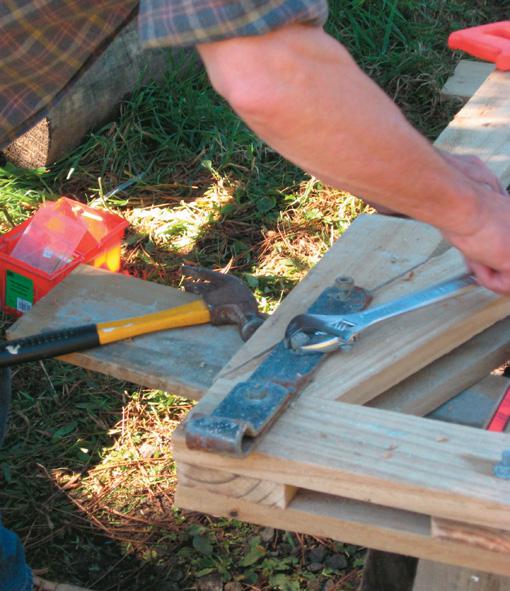
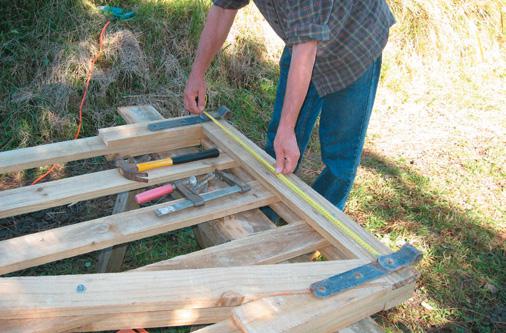
Nails
Once you have cut the gate lengths and uprights and cramped them in place using a large T-square or roofing square to check for square. We measured to the opposite diagonals and tapped the timber into square so the diagonals were at 3510 mm each. We tidied up the ends and then put in a few nails to hold the gate in place while we drilled and bolted it.
CAUTION: Put the nails to the side of where you plan to drill the bolt holes otherwise you would hit them when drilling. Be sure to use coach bolts with the domed flange head and square part under the flange and not hexagon head bolts, popularly called engineers’ bolts, which would not draw into the wood.
I used M 8s to pin the diagonal, uprights, and ends on either side of the parallel bars and M 10s for hinges. You will need 100 mm bolts to get through the hinge part of the gate but 110 mm bolts where there’s a double plate in the hinge at the end. In total, we used 17 of the 90 mm M 8 bolts (one extra at the bottom of the diagonal near the hinge), four of the 100 mm, and two of 110 mm.
The nuts have to be really tight on the bolts because:
1. Green timber dries out; and 2. The gate works because the bolts and nuts squeeze the pieces of timber together—friction holds the gate together, not the bolts as such.
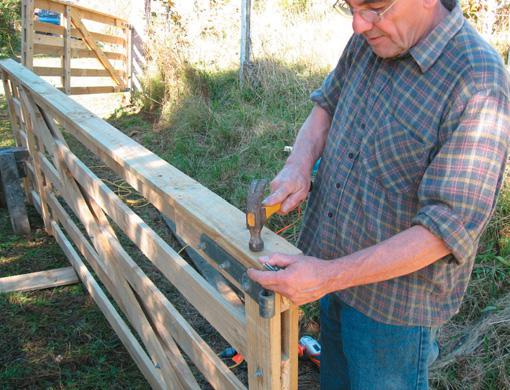
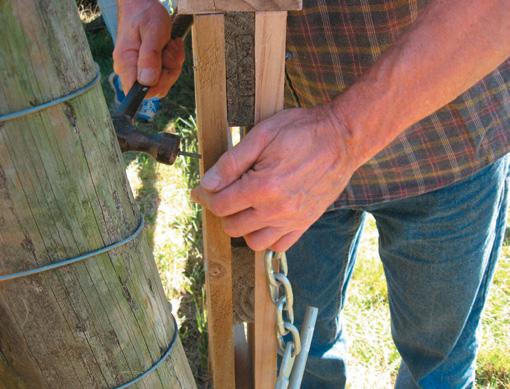
Hinges
The hinges come in sizes 12, 16, or 20 with matching gudgeons and while12 is the normal domestic garage size I have used 20s in this gate. I find it’s worth using hinges as big as possible. Before working on the hinges, we propped up the gate for a parallel and square check. The hinges go inside the gate as it opens inside towards the animals in the paddock.
The bolts have the heads all pointing on the same side for safety. At the bottom hinge end, the diagonal butts right to the upright on the end of the gate. Then extra pieces of timber (length depending on the length of the hinge) are cut to be nailed along both sides of the bottom bar as an extra support for the hinge to bolt onto. At the top hinge, similar pieces of timber are nailed on both sides of the top bar for the hinge to bolt to.
Measure
Measure down the upright between the hinges to ensure that this distance matches the distance between the gudgeon plates on the gate post. For me, this was 935 mm. The heel of each hinge is flush with the edge of the gate and the holes for the gudgeon pins are over the edge. Ensure that the hinges are square to each other. Getting the measurement right between the hinges is crucial – this has to be the right profile if the gate is to swing properly.
A good tip is to leave a 2 mm extra space between hinges on the gate in case it doesn’t fit. If the fit is too tight on the post your job is ruined. If the fit is slightly loose, you can work by adjusting the space left between hinge and gudgeon plate.
Nail a single plank onto the top and the gate is ready to fit. Ensure all the bolts are tight, carry the gate to the hinges and fit it on. It may take a few taps with the hammer to ensure the bottom hinge is sitting down onto the bottom gudgeon plate.
Chain
The chain and hook for hooking over the staple on the gate post when the gate closed is simply nailed into the gap between the uprights at the end of the gate. This gate doesn’t take long to make and is a satisfying job. As the gate simply sits on the hinge pins, some farmers may weld a washer or similar into the top hinge-pin set up to stop the gate being lifted by unsavoury characters.
